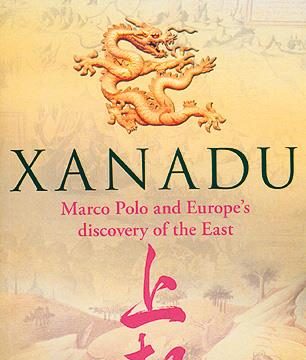What with Samuel Coleridge having his say through an opium haze, Orson Welles deifying it in Citizen Kane and the countless subsequent representations in popular culture, the very name Xanadu conjures up exotic distance, an unimaginable opulence. Too fantastic to be true, even. But it exists, of course, as the more probable-sounding Shangdu, the summer palace of the great Kublai Khan. Ever-obsessed with China and Mongolia, historian and travel writer, John Man, takes us there, dogging the steps of Marco Polo, one of the greatest travellers, possibly, in all history.
Marco Polo set out from Venice, with his father and uncle, a very callow 17-year-old. His 24-year journey — across Europe to Mongolia and China, buttressed by 17 years in the service of the Emperor Kublai Khan (during which he made extensive forays into Asia), and his return to Venice by way of Indonesia, Sri Lanka and Persia — opened forever more the doors between Europe and the Orient. He might, indeed, have been an unparalleled authority on every place he had seen — had he only been believed.
When it comes to Marco, John Man is both defender and accuser — he sifts through the material, interpreting the original, here pointing out the veracity that lies behind some assertions, there scoffing at the Venetian’s exaggerations and lack of academic rigour. He is by turns protective and derisive, maddened at times by Marco’s lack of useful detail, his silence on subjects that Man wants to know about; sardonic at others about Marco’s uncultured prejudices and his flagrant embroidery. At his account of the siege of Xiangyang, where Polo takes the credit for building the trebuchet that breached the fort, when according to the chronology he couldn’t have reached Kublai’s court for another year or two, he quite disowns Polo, “Let us be frank: It’s a lie.”
But he draws up the extenuating circumstances as well. Marco’s travels were written up after they had ended; in fact, in confinement in Genoa. His fellow-prisoner, Rustichello, as it happened, was a writer of small romances. It was inevitable: for the next two years, Marco recollected while Rustichello ghost-wrote and (probably) edited and, to use a modern phrase, sexified the travelogue. Then too, the duo wrote in French, the literary language of the time, when neither knew it exceedingly well.
The book is equally interesting when the writer puts Marco aside. The Polos’ route into China went through some of the most inaccessible and forbidding landscapes in Central Asia: the Wakhan corridor, the peaks of the Hindu Kush, the harsh Taklamakan… Man compensates for Marco Polo’s reticence by overlaying the impressions of explorers who went after him: Lord Curzon, who found the hitherto secretive source of the Amu Darya, Sir Aurel Stein and Sven Hedin.
At the heart of the book, however, is Shangdu, whose location and design was intended to marry Chinese and Mongol features so as to earn Kublai Khan loyalties from both ethnicities. Visiting it again and again, Man marks changes even between 1996 and 2008, making it seem absurd for us to try and see the Xanadu that once existed. Indeed, standing at a temple in the Imperial City, he says himself: “Sometimes I wonder if there is any point going to places where great events happened. We were standing on a grass mound…with absolutely nothing to help reconstruct the drama of the occasion.” In the precincts, Man comes to the spot where once stood the Cane Palace. This was the ‘pleasure-dome’ that so fired Coleridge, that Marco described: “a great palace… which is all of canes.
Moreover, the great Khan had made it so arranged that he might easily have it taken away.” This was, in fact, a mobile structure that could be put up and dismantled at will. So taken is Man with it that he ropes in experts, London-based engineers, Expedition, to help him build a virtual dome to Marco’s specifications. The wealth of detail that follows is incomprehensible to the lay person but still manages to communicate excitement for a project well worthy of all this effort.
Polo’s journey has been examined before, but this is a particularly engaging version.




